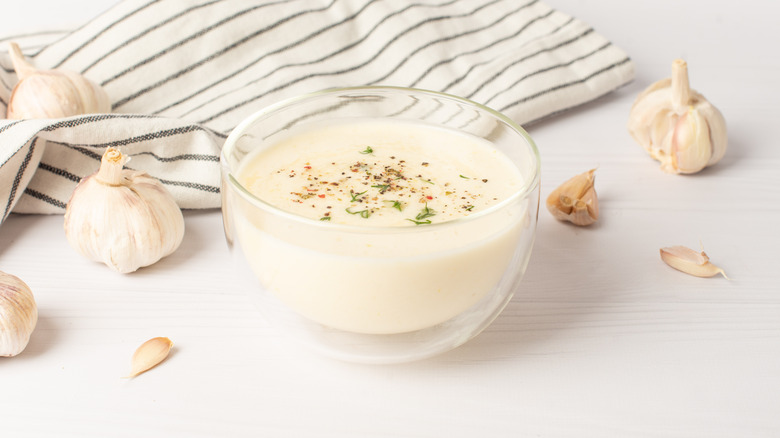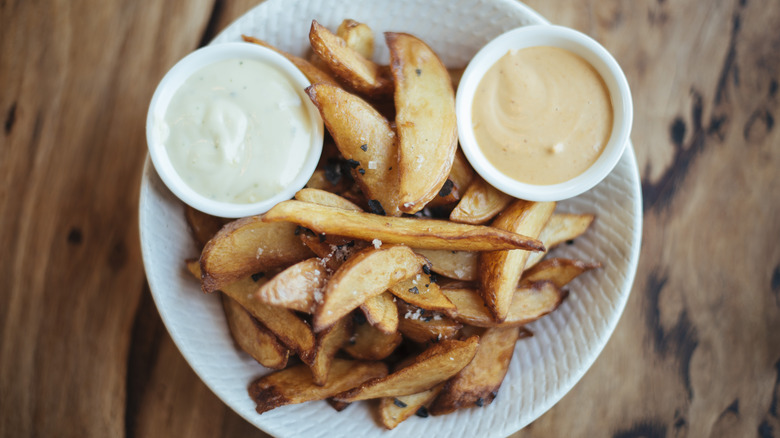The First Known Aioli Sauce Can Be Traced Back To Roman Times
Aioli, the creamy, garlicky, olive-oil-based sauce that's often compared to mayonnaise, is deeply rooted in Mediterranean culinary history. The word aioli — derived from the French words for garlic ("ail") and oil ("huile") — is believed to have ancient origins that trace back to the Roman Empire. The earliest known references to aioli come from the writings of the Roman scholar Pliny the Elder, who mentioned the emulsified sauce made from garlic and oil. The rudimentary recipe was likely used to enhance the taste of fish and vegetables, which were — and still are — central to the Mediterranean diet.
The simplicity of the ingredients belies the skill and effort required to achieve the right consistency for aioli. The standard recipe for garlic aioli starts with crushing fresh garlic cloves into a paste, traditionally done with a mortar and pestle. This method releases the essential oils in the garlic, imparting a potent flavor. The next crucial step involves slowly drizzling in olive oil while continuously stirring to generate an emulsion. This labor-intensive process was typically performed by hand, which required plenty of patience.
Aioli has withstood the test of time since Ancient Rome
As aioli's popularity spread throughout the Mediterranean, it became a significant element of local cuisine, served with boiled vegetables, fish, and bread. Pliny the Elder, who briefly resided in Tarragona, Catalonia, Spain, favored "allioli," a pure, pungent sauce made with just garlic and olive oil. On the other hand, Provençal aioli (le beurre de Provence) is generally thick, since the texture is enriched with egg yolk — the key difference between aioli and mayonnaise.
As the centuries have passed, aioli has maintained its status as a beloved condiment. Its enduring appeal continues to delight palates worldwide, whether served as a dip, a burger or sandwich spread, or a flavor-boosting accompaniment to seafood, veggies such as Brussels sprouts and grilled artichokes, and other hearty sides and entrées. Today, aioli is savored in dining rooms around the globe, frequently adapted to suit contemporary tastes. For example, some creative aiolis incorporate herbs and spices like basil, curry, smoked chipotle, lemon pepper, or Iron Chef Jose Garces' secret ingredient for aioli, saffron. Meanwhile, other aioli recipes are infused with sun-dried tomatoes, sriracha, beer cheese, or mustard. Despite these novel variations, the essence of aioli remains a testament to the timeless combination of garlic and olive oil — cherished ingredients since ancient Rome.

